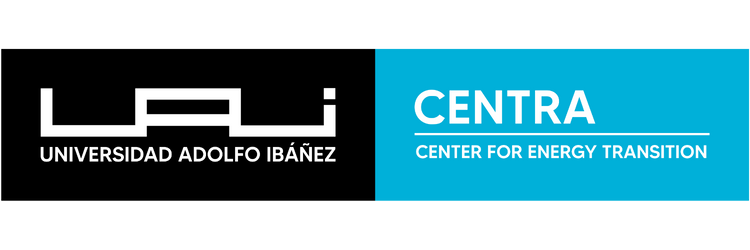
Chasing efficiency
June 5, 2023
In Chile, the phrase “being where the sun shines brightest” is commonly used to describe a person who seeks opportunities in the most beneficial or comfortable situations, particularly in economic or social contexts. This saying also provides insight into the function of solar trackers, which optimize energy production in photovoltaic systems by maximizing solar exposure through mobility.
Solar trackers enhance solar radiation efficiency for electricity generation in photovoltaic projects. In this article, experts and suppliers discuss their functionality and technical advantages.
How Do Solar Trackers Work?
SOLTEC, a Spanish company specializing in solar trackers, explains that a solar tracker is a mobile device that anchors a solar panel to the ground, ensuring optimal energy generation by orienting the panels toward the most advantageous solar angles.
“Much like a sunflower, a solar tracker aligns the panels to keep their surface perpendicular to the sun or aligned with the Earth’s meridian,” SOLTEC experts describe.
Jessica Sánchez de Araujo, Head of Pre-Sales for Latin America and the Caribbean at Trina Solar, explains that trackers can increase energy production by 10% to 25% compared to fixed-tilt structures.
“With the increasing use of bifacial modules, trackers can better capture diffuse radiation and albedo (reflected irradiation), maximizing energy output,” she adds.
Gian Franco Patrone, Head of New Energy at Enel X, highlights that solar trackers continuously adjust panel orientation in real time, optimizing their position for maximum energy absorption.
“Trackers move the panel to follow the sun, ensuring the highest possible energy yield without requiring additional space,” he explains.
Productivity Increase
According to Patrone (Enel X), the average capacity factor for a photovoltaic plant is between 20% and 23%, depending on location, terrain complexity, and other factors.
By incorporating a tracker system, the capacity factor can increase to 26%-27%.
Regarding energy generation improvements, he estimates that photovoltaic systems with trackers experience a 20%-40% increase in production, with the lower end being the most common.
Carlos Silva, an electrical engineering Ph.D. and consultant at CENTRA UAI, states that performance improvements range from 20% to 30% for single-axis horizontal tracking compared to fixed panels.
“The effectiveness of tracking depends on latitude—the higher the latitude, the less beneficial the tracking system becomes,” he explains.
Advantages and Disadvantages
Advantages:
- Increased energy production
- Better adaptation to weather conditions, reducing the impact of humidity and dust
- Optimized land use, generating more energy per square meter
“Trackers allow for more efficient energy production, even when the sunlight is not directly hitting the panel at optimal angles,” SOLTEC experts highlight.
They also emphasize their commitment to innovation, developing high-quality trackers adaptable to various projects and weather conditions.
Disadvantages:
Carlos Silva (UAI) points out that tracking systems require motors, typically one motor per several panel rows, which increases maintenance needs.
Gian Franco Patrone (Enel X) agrees, noting that trackers require power supply systems, which can be either autonomous or connected to the electrical grid.
Additionally, he stresses that space is a key factor when planning tracker installations, as solar plants with trackers require more land. Furthermore, the terrain must have suitable characteristics, avoiding areas that are too rugged or sloped.
Implementation in New and Existing Projects
Gian Franco Patrone explains that solar trackers were initially used in large-scale projects, but technological advancements have enabled their adoption in smaller projects, such as PMGD (Small Distributed Generation Projects).
“Solar trackers have become a standard in medium and large-scale plants, now included in almost all new projects,” he states.
He also confirms that trackers can be installed in operational photovoltaic plants, although it is more cost-effective to integrate them during initial construction.
“Retrofitting existing plants requires additional investments in civil works, communication systems, maintenance contracts, and risk mitigation strategies,” Patrone explains.
Jessica Sánchez de Araujo (Trina Solar) agrees that installing trackers in operational plants is technically feasible, but must follow strict safety protocols.
“Various estimates place single-axis horizontal tracking performance improvements at 20%-30% compared to fixed panels,” states Carlos Silva (CENTRA UAI).
Smart Tracking Algorithms
There are various types of trackers, primarily classified by the number of movement axes. Single-axis trackers are the most common.
TrinaTracker offers Vanguard 1P and Vanguard 2P, independent-row trackers featuring an intelligent backtracking algorithm called SuperTrack.
SuperTrack consists of two algorithms:
- STA (Smart Tracking Algorithm): Enhances energy generation during cloudy days or conditions with high diffuse irradiation.
- SBA (Shadow Blockage Algorithm): Minimizes shading losses between panel rows, particularly in complex terrains.
“SuperTrack considers 12 key parameters, including date, time, longitude, latitude, terrain height, albedo, tracker dimensions, bifacial module efficiency, and radiation measurements from a pyranometer. This can increase project energy gains by up to 8%,” explains Sánchez de Araujo (Trina Solar).
Furthermore, each Vanguard 1P and Vanguard 2P axis moves autonomously with SuperTrack, optimizing power output compared to dual-row trackers.
“Solar trackers generate more electricity in the same space as fixed-tilt systems, making them ideal for maximizing land efficiency,” highlights SOLTEC.
Large-Scale Solutions
SOLTEC offers SF One, SF 7, and SF 7 Bifacial trackers.
SF One is a dual-row 1P tracker, combining mechanical simplicity with industrial expertise. It is designed for larger module formats (72-78 cells) and features self-powering capabilities, reducing operational costs.
Additionally, SF One includes:
- Full-wireless control
- Open Thread mesh networking
- TMS (Tracker Monitoring System) for low-latency communication
Another innovation is Face-2-Face positioning, which doubles the area covered by cleaning vehicles, significantly reducing washing time per MW.
Meanwhile, SF 7 and SF 7 Bifacial offer high energy density per hectare, making them ideal for large-scale projects.
“SF 7 has a 5% higher production density than other trackers, with a 6% gain from backtracking,” SOLTEC experts report.
Compared to competitors, SF 7 and SF 7 Bifacial require:
- 46% fewer batteries per MW
- 15% fewer components
- 15% fewer fasteners per battery
“Installation time is significantly reduced, optimizing construction costs and increasing MW installation rates,” they conclude.
Read the full article in Revista Electricidad.
